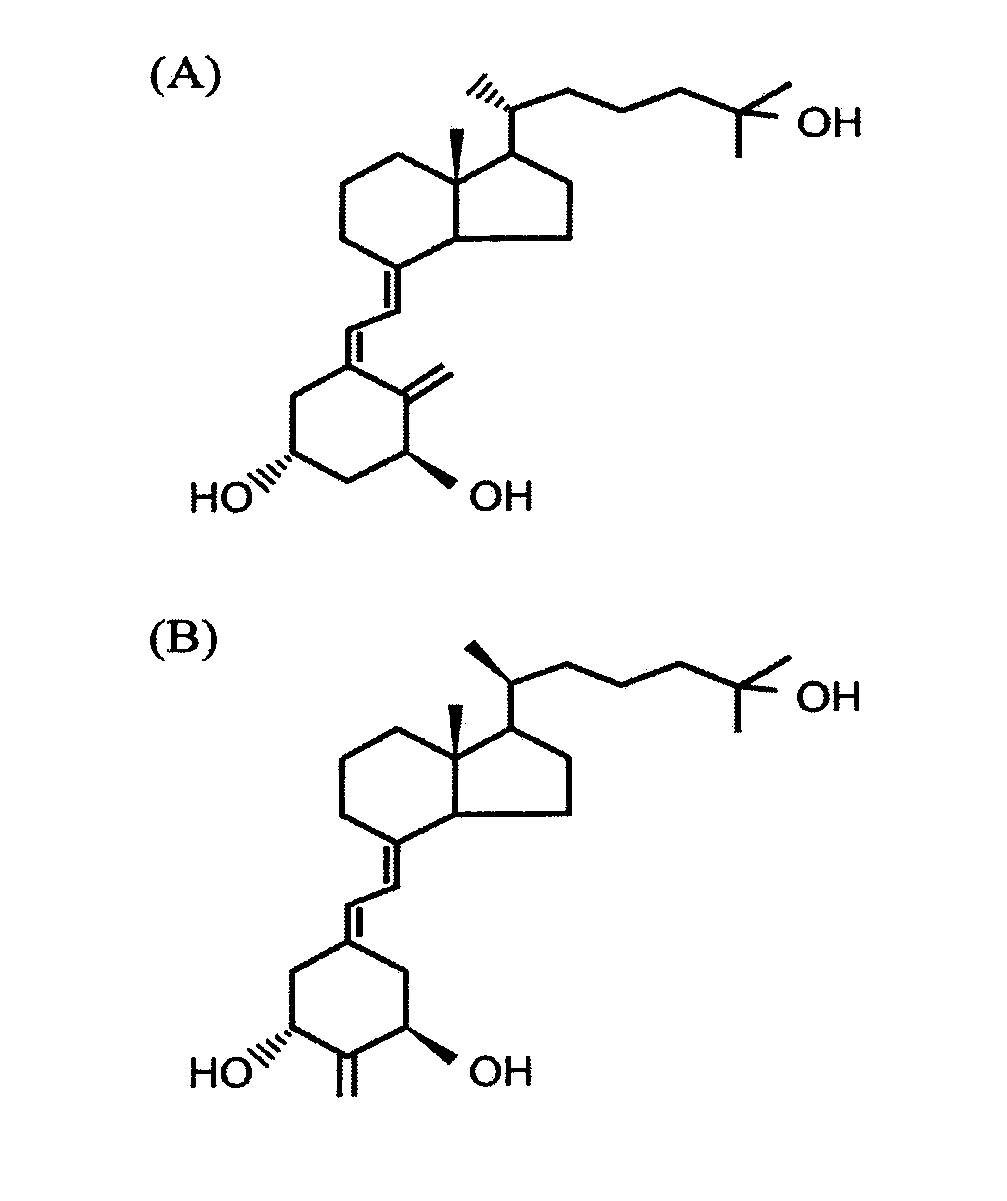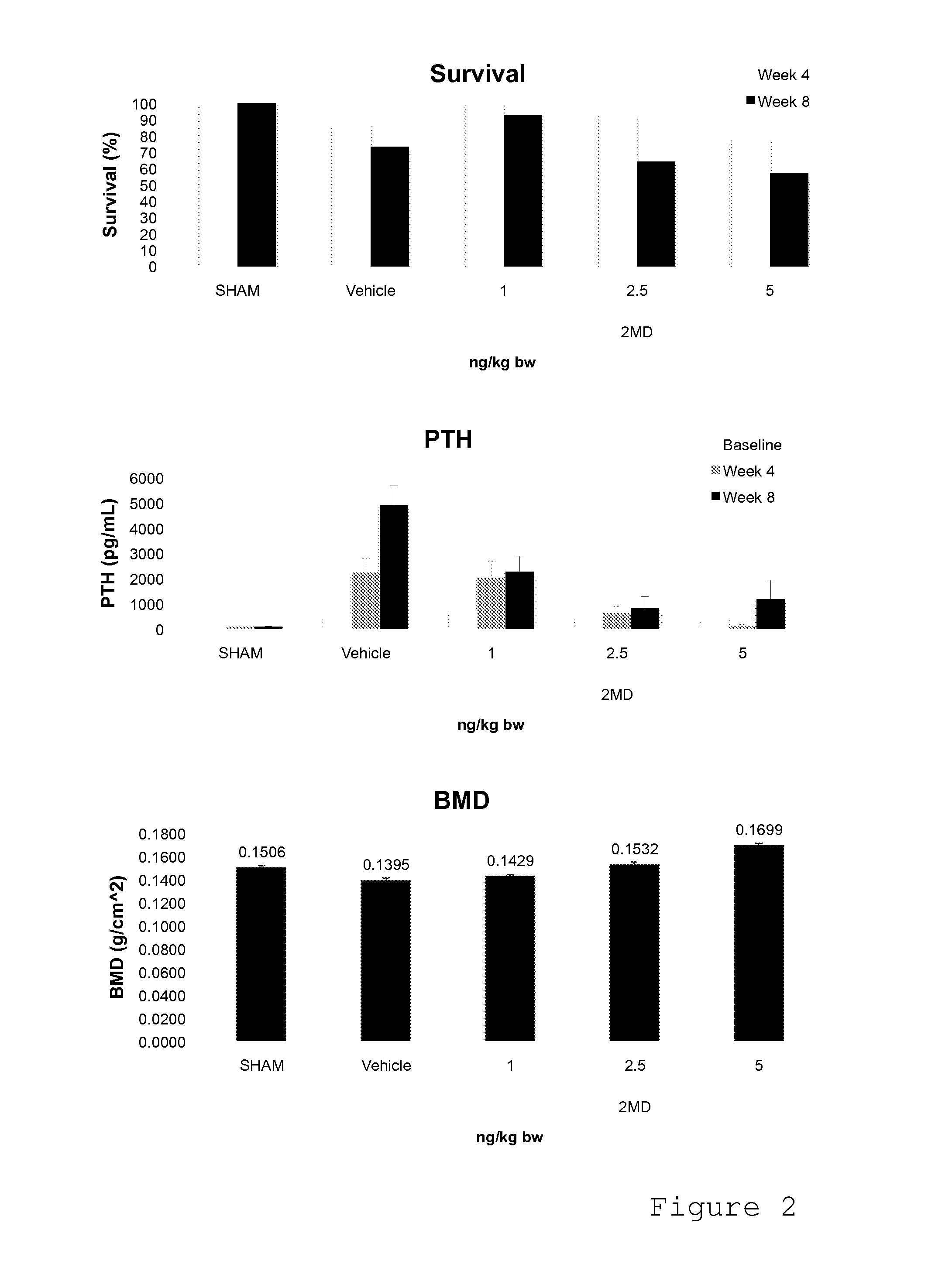Method of Preventing Renal Disease and Treating Symptoms Thereof
a technology of vitamin d and compound, applied in the field of vitamin d compounds, can solve the problems of renal failure, limited hemodialysis treatment, and extremely expensive procedures, and achieve the effect of preventing renal failur
- Summary
- Abstract
- Description
- Claims
- Application Information
AI Technical Summary
Benefits of technology
Problems solved by technology
Method used
Image
Examples
example 1
Methods and Materials
[0084]Mice. All mice used in this study were female MRL / MpJ-Faslpr / J mice either purchased directly or originally purchased from The Jackson Laboratory and bred in house. All mice involved in each study were age matched to the week of birth. All animal handling was performed according to protocol A1205 approved by the University of Wisconsin—Madison Institutional Animal Care and Use Committee. From weaning, female mice were placed on purified diet containing 0.47% calcium without 2MD until treatment initiation. The purified powder diet was prepared in agar form and administered 3 times a week. 2MD was administered through diet based on 5 g daily diet consumption per mouse. Water was given ad libitum. Blood was taken via retro-orbital bleeding method under isoflurane anesthetic. Serum was isolated from blood samples, frozen and subsequently analyzed with a benchtop clinical chemistry analyzer (Pentra 400, Horiba ABX). Organ pictures were taken with a Canon EOS 5D...
example 2
NOD Mouse Model of Type I Diabetic Nephropathy
[0098]Disease Induction. NOD mice (breeder pairs) were obtained from JAX laboratories (Bar Harbor, Me.). Weanling mice were placed on chow diet (5K52 Lab Diets) or purified diet (Suda et al., Purified Rodent Diet-Diet 11) and allowed to spontaneously develop diabetes (two consecutive measurements of plasma glucose >250 mg). Water and diet were provided ad libitum.
[0099]Animal Husbandry. Animals were housed in autoclaved, plastic shoe-box style cages with corn cob bedding in groups of 2-4 animals / cage. Once mice were confirmed diabetic, the cages were changed daily. The animal rooms were maintained at a temperature of 68 to 72° F. and a relative humidity of 25 to 75%. The holding rooms were set to provide 12 hours of light per day.
[0100]Treatment Groups. Mice were tested for elevated urinary glucose (>2000 mg; dipstick) two times per week. If the urine test was positive, a fasting blood glucose was performed the following day (spectrophot...
example 3
Proteinuria Development is Prevented by 2MD
[0102]In this example, the inventors show the effect of 2MD on preventing NOD mice from developing proteinuria.
[0103]We selected doses of 2MD that would either cause: 1) significant hypercalemia (˜11 to 12 mg / dL or Δ˜1.5 to 2.5 mg / dL over control group); 2) mildly (−10 to 11 mg / dL or Δ˜0.7 to 1.5 mg / dL over control group) increased serum calcium levels; or 3) negligible increase in serum calcium levels (−10 mg / dL or Δ0.5 mg / dL over control group; FIG. 6A). 2MD was effective in preventing proteinuria in a dose dependent manner, with the 5 ng 2MD / mouse / day dose completely preventing proteinuria (comparable to a 300 ng dose of 1,25(OH)2D3; FIG. 6B). In addition to preventing proteinuria, 1 ng 2MD treatment delayed mean time of onset of proteinuria (FIG. 6C). Growth of the mice was adversely affected with 5 ng 2MD treatment whereas a slight impact on growth was observed with 0.5 and 1 ng 2MD treatment (FIG. 6D). The 5 ng 2MD treatment group had...
PUM
 Login to View More
Login to View More Abstract
Description
Claims
Application Information
 Login to View More
Login to View More - R&D
- Intellectual Property
- Life Sciences
- Materials
- Tech Scout
- Unparalleled Data Quality
- Higher Quality Content
- 60% Fewer Hallucinations
Browse by: Latest US Patents, China's latest patents, Technical Efficacy Thesaurus, Application Domain, Technology Topic, Popular Technical Reports.
© 2025 PatSnap. All rights reserved.Legal|Privacy policy|Modern Slavery Act Transparency Statement|Sitemap|About US| Contact US: help@patsnap.com



